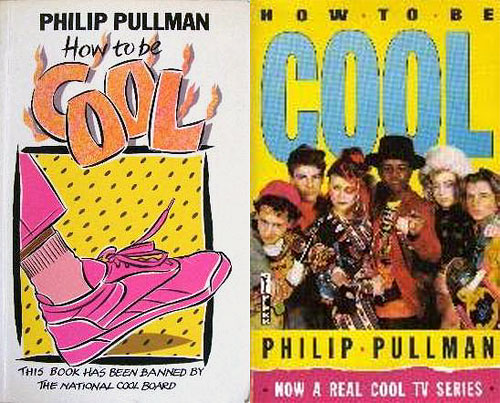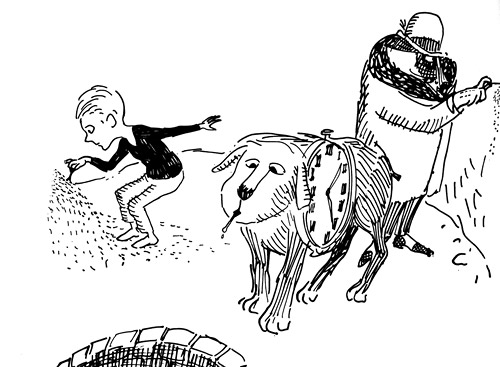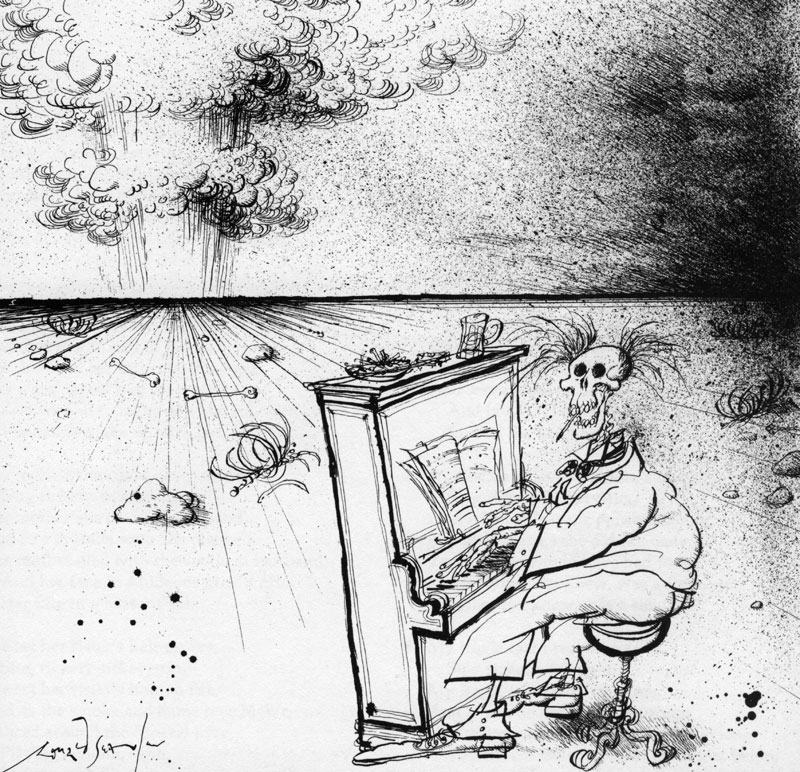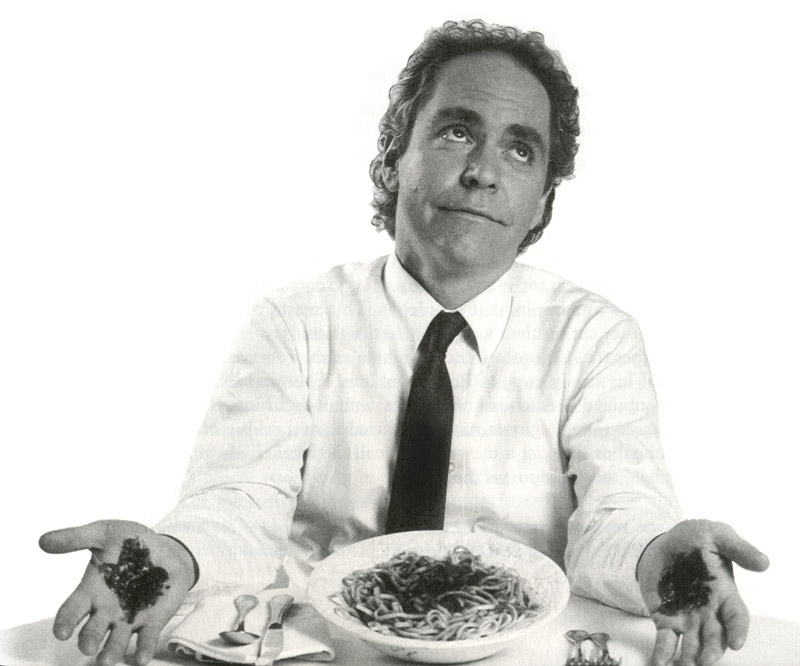This may be the most important proposition revealed by history: “At the time, no one knew what was coming.” From the first page of Haruki Murakami’s 1Q84 (translated by Jay Rubin). His earlier books that I’ve read have been wonderful dream factories, but I’ve seen this one scoring some negative reviews. I don’t know what’s coming over the next 925 pages, but I have hope that it’ll be good.
Tag: books
-
This May Be the Most Important Proposition
-
Queequegs Tattoos
This tattooing had been the work of a departed prophet and seer of his island, who, by those hieroglyphic marks, had written out on his body a complete theory of the heavens and the earth, and a mystical treatise on the art of attaining truth; so that Queequeg in his own proper person was a riddle to unfold; a wondrous work in one volume; but whose mysteries not even himself could read, though his own live heart beat against them; and these mysteries were therefore destined in the end to moulder away with the living parchment whereon they were inscribed, and so be unsolved to the last.
The description of Queequeg’s tattoos quoted on the blog The Loom, the author of which has a new book out about science-inspired tattoos. It hadn’t occurred to me when reading Moby-Dick, but European sailors had only been decorating themselves with tattoos for some 80 years by the time the book came out — the first example of the word used in English was recorded in Captain Cook’s naturalist’s journals in 1769.
(Here’s the original passage from Moby-Dick)
-
The cannibal curse of corporate prose
From the NY Times review of the updated 2011 “digital” edition of How to Win Friends and Influence People:
The following sentence, which appears on Page 80, is so inept that it may actually be an ancient curse and to read it more than three times aloud is to summon the cannibal undead: “Today’s biggest enemy of lasting influence is the sector of both personal and corporate musing that concerns itself with the art of creating impressions without consulting the science of need ascertainment.”
I don’t think they like the book’s modernized language.
-
Philip Pullman How to Be Cool

I’ve never read this, can’t say I’ve seen the TV miniseries, and I know you shouldn’t judge a book by the cover, but this seems like a total non sequitur coming from the celebrated author of the iconoclastic His Dark Materials… What happened here?
(via Julian Hector)
-
The Phantom Tollbooth

I’ve been re-reading Norton Juster’s The Phantom Tollbooth, one of my favorite books from when I was a kid, and it still holds up. I remember really enjoying it for its wit and wordplay (even if a lot of it whizzed over my head), but the point of the story, in which Milo learns about Wisdom (including false understandings of such) and the dangers lurking in the Mountains of Ignorance, resonates much more strongly as an adult.
“Because, my young friends,” he muttered sourly, “what could be more important than doing unimportant things? If you stop to do enough of them, you’ll never get to where you’re going.” He punctuated his last remark with a villainous laugh.
“Then you must―” gasped Milo.
“Quite correct!” he shrieked triumphantly. “I am the Terrible Trivium, demon of petty tasks and worthless jobs, ogre of wasted effort, and monster of habit.”
“But why do only unimportant things?” asked Milo, who suddenly remembered how much time he spent each day doing them.
“Think of all the trouble it saves,” the man explained, and his face looked as if he’d be grinning an evil grin―if he could grin at all. “If you only do the easy and useless jobs, you’ll never have to worry about the important ones which are so difficult. You just won’t have the time. For there’s always something to do to keep you from what you really should be doing…”
And with that, I’d better get off Tumblr!
-
Tom Lehrer Ronald Searle

Awesome thing that I didn’t realize I had on my bookshelf: the Tom Lehrer sheet music songbook I’ve had since I was a kid was illustrated by cartoonist Ronald Searle. I must have been unfamiliar with Searle the last time I looked through this book — his scratchy style complements Lehrer’s acerbic wit nicely.
The whole book, “Too Many Songs By Tom Lehrer with not enough drawings by Ronald Searle”, is available for perusal on Scribd, in case you’re the sort that enjoys songs about masochism, the periodic table, bull fighting, nuclear annihilation, and Ivy League snobbery…
-
The Metrics of Rap

Language Log drops the science on the metrics of rap and hiphop, as part of a larger article on Yale University’s recently-published, transcription-error-prone The Anthology of Rap. The above image illustrates the meter of Grandmaster Flash and the Furious Five’s SuperRappin’.
As always in such cases, there’s an interesting question whether this should be thought of as a superficial deviation from an underlyingly square rhythm, or rather as a different draw from a set of available polyrhythmic patterns. For some more discussion, see e.g. “Rock syncopation: Stress shifts or polyrhythms?”, 11/26/2007. Note in any case that the mixture of four-beat and three-beat (lyric) lines evokes the traditional English ballad meter, whatever we’re to make of the variations in alignment.
-
Linguni a La Stigmata

From a 1992 New York Times review of one of my favorite books from when I was in school, Penn & Teller’s How to Play With Your Food:
A copious plate of pasta arrived, with no sauce. Teller suddenly stabbed his palms with a fork and rummaged through the strands of linguine. When a bright red river surged from beneath the plain pasta, Teller stood up, dripping red palms outstretched. Voila! The thrillingly gruesome “Linguine a la Stigmata.” Waiters smiled, diners at nearby tables didn’t notice a thing, and the linguine was served to one and all. …
“Violence is what gives you real excitement,” [Penn] continued. “It’s what gives us the rage to live. Without violence, you don’t really have art. You have to have your Shakespeare, your Greek tragedies. Teller and I are both very pro-violence in the arts, but only in the arts. No one wants to go on a roller coaster that’s slow and flat.”
But does that include sticking a fork into your eye? Absolutely. “Nothing is more life affirming than doing this stuff and not being hurt,” Teller said. “It’s cool to be startled. You laugh, and that’s a social activity. There are repartees, and there is ramming a fork into your eye.”
-
Comics in the Courtroom

From the New York Times, a notice on an exhibition entitled “The Courtroom and Comics” at the Yale Law Library:
The medium serves as a guide to what was going on in society at the time, he said: “Comics are very much a reflection of pop culture.” The law has long been a part of that, whether it’s Perry Mason grilling a witness or Denny Crane blustering.
In the exhibition, many of the images have the power to delight, especially for those who collected comics in their youth. If your day job happens to be anything like mine — I’m the national legal correspondent for this newspaper — you will certainly notice that the comic book creators’ knowledge of law had a few gaps. For starters, the little girl in that Superman cover would have been seated in the witness chair, if in fact taking sworn testimony from a minor in open court was allowed in the Metropolis jurisdiction, and Superman would have been elsewhere in the courtroom. But you probably won’t mind that the creators sacrificed a bit of reality for drama, which is also why, you know, the main character can fly.
Mike Widener, the rare book librarian mentioned in the article, formerly oversaw the Law in Popular Culture collection at our own Tarlton Law Library here in Austin, which houses a great array of movies and books with lawyerly angles.
(Via the NY Times)
-
Daydreaming
And as she lost consciousness of outer things, and her name and her personality and her appearance, and whether Mr. Carmichael was there or not, her mind kept throwing up from its depths, scenes, and names, and sayings, and memories and ideas, like a fountain spurting over that glaring, hideously difficult white space, while she modelled it with greens and blues. On daydreaming as a means to get past the terror of the blank canvas. From Virginia Woolf’s To The Lighthouse.
